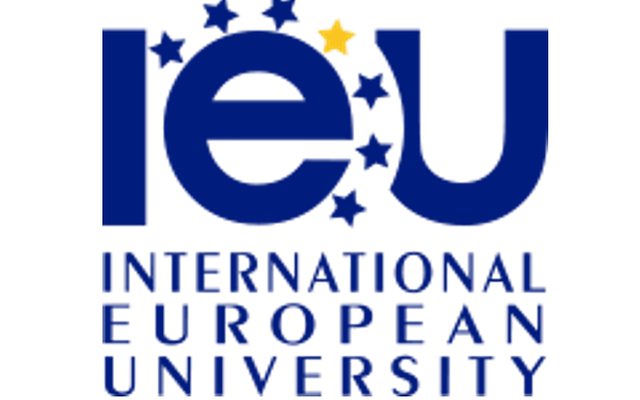On December 26, the Mykhailo Pozhyvanov Art Gallery “ABC-Art” and on December 28 at the meeting of the Academic Council of the International European University, the solemn awarding of the World Order of the Star “CREDO” took place.
The Order is given for the contribution to social development of Ukraine’s and world’s most famous people in the following nominations: state activities, public activities, science, medicine, education, culture, art, sports, news coverage, patronage, charity, businesses, law.
The awarding ceremony was initiated by the Committee on Public Awards of Ukraine, Honorary President Dmytro Cherednychenko, according to the decision of the Non-Governmental Organization of Grants, Ratings and Nominations, Honorary President Roman Kashyrin, and according to Cultural Diplomacy International Information Agency, Director Maksym Tiutiunnykov. The event was supported by International European University.
Award winners:
• Franz Vladimir von Habsburg-Lothringen, Grand Duke of Austria, President of International European University;
• Alla Navolokina – First Vice-Rector and Co-Founder of the International European University;
• Mykhailo Pozhyvanov, Ukrainian policymaker, Doctor of Engineering, professor;
• Pavlo Zibrov, People’s Artist of Ukraine;
• Ivo Bobul, People’s Artist of Ukraine;
• Oleksandr Zlotnyk, People’s Artist of Ukraine, Rector of R.Glier Kyiv Municipal Academy of Music;
• Nataliia Shelepnytska, People’s Artist of Ukraine, Ambassador of Peace;
• Vira Revenko, People’s Artist of Ukraine;
• Maksym Zhaldak, Head of Kyiv Regional Center of the Association of Implantologists of Ukraine.
The event also awarded the Ecological Order of the GREEN AWARD to Ihor Beliakov, Director of Odesa Zoo.
The event was moderated by:
• Valery Potemkin – People’s Artist of Ukraine, President of the International Charitable Foundation “Chief Santa Claus”.
• Oleh Pinchuk, People’s Artist of Ukraine, international expert at Shanghai ArtCollection Museum of SRIC, Director of European Art School.
• Roman Kashyrin, Honorary President of the Non-Governmental Organization of Grants, Ratings and Nominations.
The World Order of the Star “CREDO” (motto: Ad Astra) is awarded for the achievements of mankind to the best of the best in various spheres of human life. The composition in the center of the award, the star system closest to the Sun with Alpha Centauri, the star closest to the Earth, the brightest star in the Centaurus constellation, and the third brightest star in the sky, symbolizes the aiming at the highest ideals. The star is a multi-valued image. It is a symbol of eternity, light, great achievements, ideals. Its symbolic aspects are related to the concept of multiplicity (stars in the sky are a symbol of vast varieties), organization and order.
Over the past 12 years, the Order has been given to scientists, cosmonauts, policymakers, artists, musicians, health professionals, diplomatic officials, public figures.
Borys Paton, Hero of Ukraine, President of the National Academy of Sciences of Ukraine, President of the International Association of Academies of Sciences, the first-ever Hero of Ukraine, honorary member of the Rome club.
Semen Potashnyk, Hero of Ukraine, Ukrainian commercial figure, chairman of the board of Ukrhydroenergo PJSC, President of the Association of Ukrhydroenergo, member of the central board of the Scientific and Technical Union of Power Engineers and Electrical Engineers of Ukraine.
Leonid Kadeniuk, Hero of Ukraine, Major General of the Air Forces of Ukraine.
Bohdan Stupka, Hero of Ukraine, Ukrainian film and theater actor.
People’s artists: Larysa Kadochnykova, film and theater actress, Yevheniia Basalaieva, pianist and tutor, Lamara Chkoniia, opera singer, Oleksii Kuzhelnyi, Armen Dzhigarkhanyan, Liia Akhedzhakova, film and theater actress;
Oleh Pinchuk, People’s Artist, sculptor.
Andrii Chebykin, People’s Artist.
Tetiana Faberge, Honorary Head of the Faberge Memorial Fund.
In October 2010, the award was given to former US President Bill Clinton for encouraging the flight of Leonid Kadeniuk, a Ukrainian cosmonaut researcher, into outer space on board of the Columbia US spaceship.
In November 2010, the award was given to Shimon Peres, President of Israel.
Other award winners:
Opera singer Montserrat Caballe.
Actor Pierre Richard.
Singer Thomas Anders.
Michaela Rose (Arabesque).
Musician Gary Moore, etc.
 According to the standards of higher education in Ukraine, lecturers should systematize students’ knowledge and develop their ability to apply acquired skills in daily healthcare routine.
According to the standards of higher education in Ukraine, lecturers should systematize students’ knowledge and develop their ability to apply acquired skills in daily healthcare routine.
It is proven that primary medical education is based on practice-oriented learning. The process of practice-oriented training is impossible without state-of-the-art technologies.
International European University does its best to make students acquire vast knowledge and undergo practical training at Ukraine’s brilliant doctors.
Valikhnovski Surgery Institute is one of Ukraine’s leading medical facilities with the 20-year history. Professional surgical achievements of Rostyslav Valikhnovskyi, the founder of the Institute, are known and recognized both in Ukraine and abroad.
By the way, Rostyslav Valikhnovskyi is an Honorary Professor of International European University.
His clients include presidents, civil servants, MPs, athletes and other celebrities, particularly the President of Ukraine Viktor Yushchenko and operatic tenor Volodymyr Hryshko. Rostyslav Valikhnovskyi managed over 250,000 patients from 27 countries and performed more than 10,000 successful surgeries. He carried out the most complicated and unique operations personally.
The new project for students and future applicants of European Medical School is released along with the press service of International European University led by press secretary Olha Levkun.
“Over the whole period of cooperation with International European University, we have been holding the first position in terms of training and directing our talented students to contemporary evidence-based surgical medicine,” Rostyslav Valikhnovskyi stressed.
The episode was shot in the doctor’s surgery room.
Watch the video materials.
Top 5 tips on choosing IEU’s European Medical School by Rostyslav Valikhnovskyi.
10 advantages of studying at IEU’s European Medical School by Rostyslav Valikhnovskyi.
On December 9, Kyiv-based Pochayna Event Hall hosted the annual International charitable event – the Parade of Nations 2021. It is aimed at helping children with psychophysical and mental disabilities.
The charitable event included a concert program. It involved 41 countries with artistic performances: Australia, Austria, Azerbaijan, Argentina, Belarus, Belgium, Bulgaria, Brazil, the UK, Armenia, Greece, Georgia, Denmark, Estonia, Egypt, Israel, Indonesia, Iran, Iraq, Spain, Italy, Kazakhstan, Canada, Qatar, Cyprus, China, Kirgizstan, Korea, Kuwait, Latvia, Lithuania, Malaysia, Mexico, the Netherlands, Germany, the UAE, Poland, Portugal, Saudi Arabia, Slovakia.

Each country represented its state flag, national clothes and creative performance.
Charity gradually becomes one of the key trends of our times: the more people join it, the better the world becomes for everyone.
International European University supports this trend and promotes friendship between our nations for peace and prosperity.

This year, International European University was represented by:

Alla Navolokina, the First vice-rector of International European University, delivered a welcome speech on the stage of the Parade of Nations:
“Ladies and Gentlemen! I am glad to address you on behalf of International European University. Our team is like a family, a part of which is on this stage. We are young, creative and European-centered. Our educational programs are based on European standards. We realize that we are training ambassadors of Ukraine. Our university teaches students from 92 countries in 7 faculties. Therefore, we encourage the humanity and charity among them,” Ms. Alla said.
Franz Volodymyr von Habsburg-Lothringen, the President of International European University, expressed his gratitude to the organizers and provided winners of the charitable lottery with gifts.

“There is nothing like realizing that we save somebody’s life and encourage others to do the same. Together we are a great uniting power that draws society’s attention to crucial issues and helps find their solution,” Mr. Franz Volodymyr stated.
The Parade of Nations 2021 engaged the following countries: Australia, Austria, Azerbaijan, Argentina, Belarus, Belgium, Bulgaria, Brazil, the UK, Armenia, Greece, Georgia, Denmark, Estonia, Egypt, Israel, Indonesia, Iran, Iraq, Spain, Italy, Kazakhstan, Canada, Qatar, Cyprus, China, Kirgizstan, Korea, Kuwait, Latvia, Lithuania, Malaysia, Mexico, the Netherlands, Germany, the UAE, Poland, Portugal, Saudi Arabia, Slovakia.

The event was moderated by Mykyta Dobrynin and Dariia Kvitkova.
Organizer: Fashion of Diplomacy
The event was supported by:
• the Ministry of Foreign Affairs of Ukraine;
• the Ministry of Culture and Information Policy of Ukraine;
• The International feminist movement for family values.
ALLA NAVOLOKINA, EVENT, FRANZ_VOLODYMYR_VON_HABSBURG_LOTHRINGEN, IEU, INTERNATIONAL_EUROPEAN_UNIVERSITY, KULIKOV, PARADE_OF_NATIONS_2021, ZHYTAR
Ferrexpo completed second course of Fe_munity corporate women’s leadership platform for middle-level employees.
During the 4 months of training, 86 Ferrexpo employees upgraded skills in negotiating, conflict management, change management, financing, time management, reputation and constituencies.
The project architecture also includes increasing the level of self-confidence (“dismantling of glass ceilings”), the desire and ability to be materialized professionally, without losing control over the work/life balance.

The course was taught by top speakers and coaches, such as Vache Davtyan – founder and owner of Promkabel-Electric, PanElectro network, LeaderWay; Daniil Vakhovsky – Managing Partner of Havas PR Kyiv; Olena Yuzkova – General Director, Era of International Education; Ivetta Delikatna and Olena Lobova – partners of the Old School training project; Dina Nemyrivchi – head of SalesCapital AG Ukraine; Marina Romanenko – practicing psychologist, certified international coach, founder of the Academy of Professional Parents.
Dmitriy Spatar, FPM First Deputy Chairman of the Board, Ambassador for Gender Issues at Ferrexpo:
“Fe_Munity Ferrexpo was opened in 2020 and we continue to pursue our Company goals of achieving gender balance. To date, more than 160 of our employees have gained knowledge, inspiration and motivation for their personal and professional development. We celebrate the unequivocal success of our initiative and this is confirmed by the achievements of our graduates. In 2022, Ferrexpo plans to expand the scope of our educational platform for women throughout Ukraine. In our country there are many talented women who work in various fields, and with proper support – this is a powerful force for the development of Ukraine’s economy.”
Iryna Rubis, co-author of the concept and curator of Fe_munity, co-founder of Biasless
“For the second time, Fe_Munity is ending with the writing of a final project with very clear and measurable KPIs. And the public defense of these works showed us that the graduates started thinking higher and wider, and the transformation took place not only professionally but also personally. The effect of raising at least 10 potential gender equality activists in the company and the town was unexpected. We also managed to introduce the participants of the project to educational thirst: the vast majority of graduates decided to join the educational Ferrexpo School of Inclusion project, which will start soon.”
Information about the company:
Ferrexpo – Swiss iron ore company with assets in Ukraine. The main activity of the company is the production and export of high-quality iron ore pellets used in steel production. Ferrexpo is the largest producer and exporter of pellets among the countries of the post-USSR states. Current production assets are FPM and FYM. Ferrexpo plc owns 100% of the shares of Ferrexpo AG, which, in turn, owns 100% of FPM shares and 100% of FYM shares. In 2020, the company produced 11.2 million tons of iron ore pellets. Steel enterprises from Austria, Germany, Japan, South Korea, Taiwan, China, Slovakia, Czech Republic, Turkey, Vietnam and the USA became the main consumers of the products. Ferrexpo is listed on the London Stock Exchange’s Main Board under the FXPO ticker. More information can be found on the website www.ferrexpo.com.

The growth of the leasing market in Ukraine will exceed 20% over 2021, but there is still great potential for further market expansion due to the still low level of leasing penetration, Anton Diadiura, co-owner of the ESKA Capital leasing company, has said.
“The portfolio of the company [ESKA Capital] doubled this year, income over nine months amounted to about UAH 400 million versus UAH 140 million in the same period last year, net profit also doubled – to UAH 29 million from UAH 14 million in 2020,” Diadiura said during a webinar organized by Freedom Finance Ukraine and dedicated to the issue of ESKA Capital bonds.
The co-owner of ESKA Capital noted the growth of competition in the leasing market, in particular, due to the switching of banks from lending to this instrument.
“In Ukraine, now about 15% of car sales go through a leasing scheme, while in neighboring Slovakia, with 5 million people, from 50% to 80% of such sales go through leasing. As far as I know, IFC estimates the potential leasing market in Ukraine at $30 billion,” Diadiura said.
He added that the company will continue to work with farmers, carriers and builders, possibly expanding the range of leasing products.
ESKA Capital LLC has been providing international leasing services for used cars, trucks and commercial vehicles, as well as agricultural machinery, trailers and semi-trailers, tractors from Europe, Asia and the USA since 2008.

Agricultural holding Continental Farmers Group has put into operation a new warehouse for storing seed potatoes with a capacity of 3,000 tonnes of simultaneous storage in Batiatychi village (Lviv region), the project cost UAH 3.2 million, according to the company’s website.
“We got a yield of seed potatoes higher than the planned indicators – 36.2 tonnes per ha. Over the season, the gross yield of seed varieties exceeded 15,600 tonnes, so we needed additional storage capacity. We plan to further increase the volume of seed potatoes, respectively, there is a need to increase storage capacity,” Continental said, citing Head of Continental Potatoes Cluster Orest Kravchuk.
According to the agricultural holding, growing potatoes is a strategic direction of its activities.
Continental Farmers Group cultivates chips, seed and food varieties of potatoes in Lviv and Ternopil regions. The total area under potatoes amounted to 1,600 hectares in 2020, in the current year – 1,800 hectares, with the total land bank being 195,000 hectares.